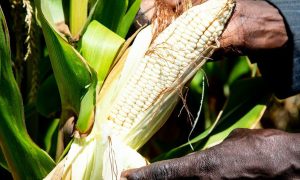Malawi: Maize Prices in Kenya and Malawi Have Soared, but Tanzania’s Haven’t – Economists Explain Why

Maize prices in Kenya and Malawi have been high due to market inefficiencies. Malawi faces high fertilizer costs and reduced production, leading to prices 63% above import parity. In Kenya, excessive margins have caused maize prices to average 82% above import parity. Both countries suffer from dysfunctional regional markets, requiring improved monitoring and intervention to address these issues.
For more than a year maize prices in Kenya and Malawi have been much higher compared with other countries in the east and southern Africa (ESA) region.
Several factors explain this.
In Malawi, high fertiliser prices which resulted in lower fertiliser usage affected maize supply. This was compounded by adverse weather and trade bans, leading to lower-than-usual production.
In Kenya, high maize prices have been driven up by excessive margins. Sellers are charging prices that are more than the import parity price – the maize price from surplus producing countries, plus transport costs for importing into Kenya.
This is particularly concerning for a country with about 1.2 million of the population facing acute food insecurity.
We are economists at the African Market Observatory, which monitors prices of staple foods and conducts research on market dynamics, including market concentration and barriers to entry, within and across countries in ESA. The analysis is complemented through in-depth field work.
Maize is the leading staple food in the region. It is commonly traded across borders to meet overall regional demand. Tanzania is the leading producer of non-genetically modified maize and exports to other countries in the region. Since 2023, Tanzania has become an important source of maize exports to the region with bumper harvests due to above average rainfall.
Malawi generally produces enough to meet its requirements while Kenya has consistently been a net importer of maize due to the large population.
If maize markets were working well, the prices in both Kenya and Malawi would consistently reflect the prevailing prices in surplus-producing countries in the region, such as Tanzania, in 2023 and 2024. Competition authorities should take a regional approach to ensure that markets are working well in terms of pricing and trade.
This would entail monitoring markets, assessing barriers to regional trade, and intervening in cases of anti-competitive conduct.
Malawi’s poor harvest
Malawi is typically able to exceed its annual maize requirements of around 3.1 million tonnes. But the country had a poor harvest in 2023. This has been linked to low fertiliser supplies and use in 2022.
The use of fertiliser increases the amount of crop harvested per area of land (crop yield). In May 2022, there was a significant increase in the prices of fertiliser (such as urea) in Malawi due to supply shocks that increased prices across the world. The world prices subsequently declined while fertiliser prices in Malawi remained high, and in general fertiliser prices in the country have been higher than in its neighbouring countries. When compared with five other countries in the region (including Zambia and Kenya), Malawi had the highest fertiliser prices and mark-ups.
Faced with high prices, farmers bought less fertiliser. Fertiliser imports in 2022 were around half of the 2021 volumes (Figure 2).
Delays in fertiliser procurement through Malawi’s Affordable Input Programme added to the problem. The government programme typically provides 250,000 tonnes of fertiliser on a subsidised basis to 2.5 million households.
Some parts of Malawi were hit by Cyclone Freddy in March 2023. But this only affected 440,000 acres (178,061 hectares) of crops. By our estimates, this accounted for about 10% of the overall crop production area.
This means that much of the poor harvest in 2023 was linked to low fertiliser usage.
Malawi fertiliser imports, by year (Fig 2)
Tanzania, for its part, has had a good harvest with an estimated 4 million tonnes of excess maize this year. This is seven times the projected import requirements for Malawi in 2024 and is enough to cover the region’s overall deficit.
If regional markets were working as they should, the price of maize in Malawi would be equal to the price (plus associated import costs) at which maize would be bought from Tanzania. We estimate the import parity price was US$265 per tonne at June 2024 prices. Maize was selling in Malawi for US$433 per tonne, giving a difference of US$168, which is an extra charge, or “excess margin”, of 63%.
The maize price in Malawi is much higher than it would have been had there been normal trading between the two countries.
Kenya’s maize production between 2020 and 2022 averaged almost 3.4 million tonnes per year. To meet its 4 million tonne annual consumption, it has been a net importer of maize.
Kenya imports maize from Tanzania and other countries in the region, including Uganda and Zambia. For instance, in 2023, about 43% (219,260 tonnes) (ITC Trademap)of Kenya’s total maize imports were from Tanzania.
Considering this, Kenya’s maize prices should be similar – that is at import parity levels – to those of its trading partners. But maize prices in Kenya have been much higher than in the rest of the region.
From January 2023 to April 2024 (Figure 3), Kenya’s prices have been marked up substantially above the cost of importing maize from the south-west of Tanzania, which is the maize producing region. In the same period, Kenya’s average price was US$624 per tonne. We calculate the average import parity price as US$359, resulting in average excess margins of about 82% between January 2023 and April 2024.
Most recently, Kenya’s maize price almost halved from over US$600 per tonne in April 2024 to US$315 in May 2024, before increasing to US$374 in June 2024.
This maize price is still above the import parity price from Tanzania at around US$249, meaning that the maize price in Kenya has a 50% excess margin. Overall, Tanzania’s maize prices have been declining since the harvest in April 2023 due to bumper production in 2023 and 2024.Close
The sharp decline in Kenyan maize prices was likely due to imports from neighbouring countries (such as Tanzania and Uganda) and maize coming on the market that was being hoarded by producers in the hopes of selling maize at higher prices.
This further highlights that maize markets in Kenya are not working well because producers have the ability to distort prices by restricting supply.
The dysfunctional regional markets allow traders and producers to continue to charge higher prices for maize in Kenya. In well functioning regional markets, cheaper maize from neighbouring countries would drive down maize prices in Kenya.
Maize markets in Malawi and Kenya are dysfunctional
Markets in Kenya and Malawi are characterised by excessive margins and high prices for maize and key inputs used in the production of maize. This is made worse by regional markets not working well in terms of pricing and trade.
This requires competition authorities to take a regional approach to monitoring markets and assessing barriers to regional trade and intervene in cases of anti-competitive conduct.
To read more about the news about the Maize News continue reading Agriinsite.com
Source Link : https://allafrica.com/stories/202408260017.html














